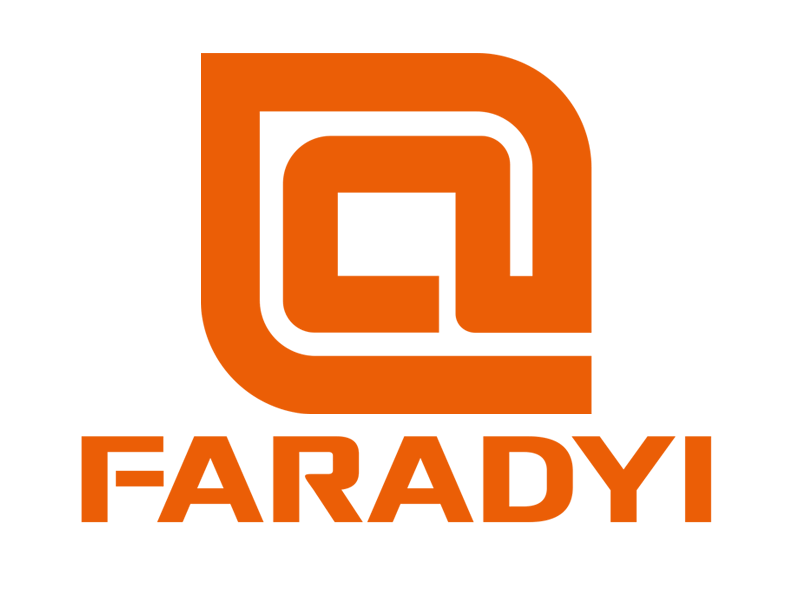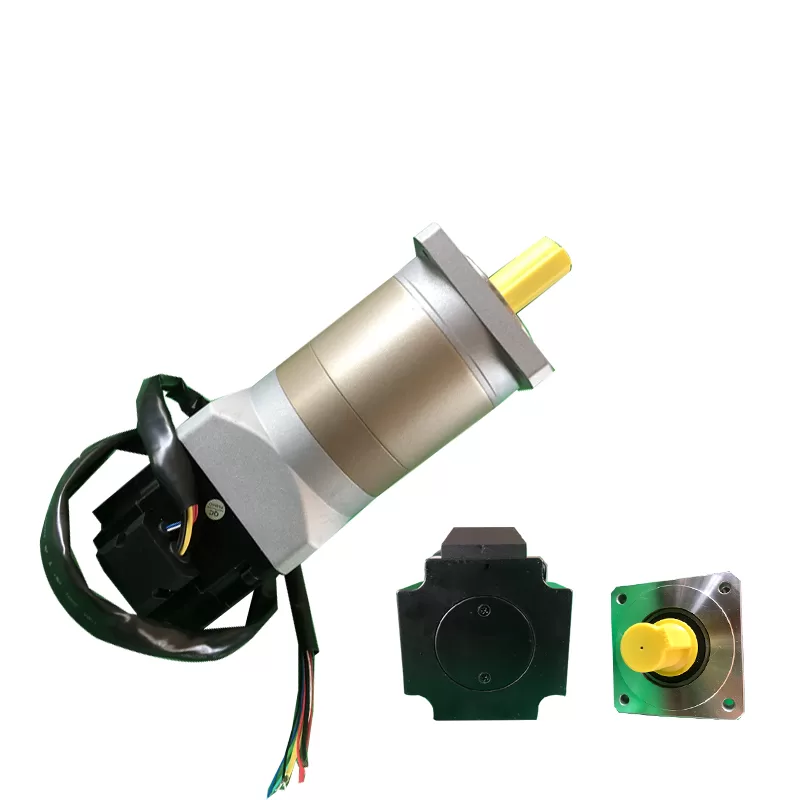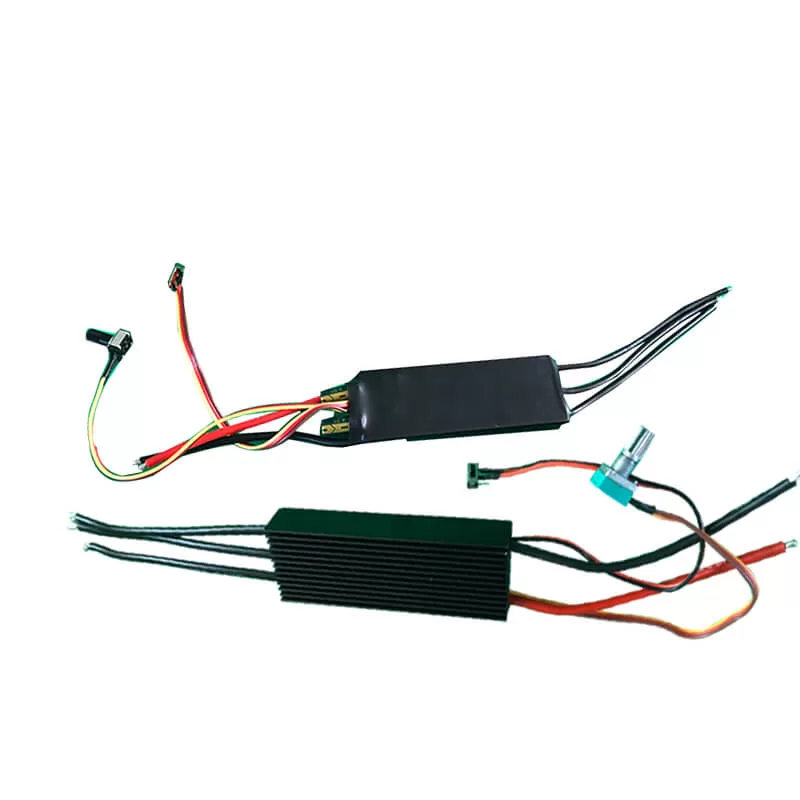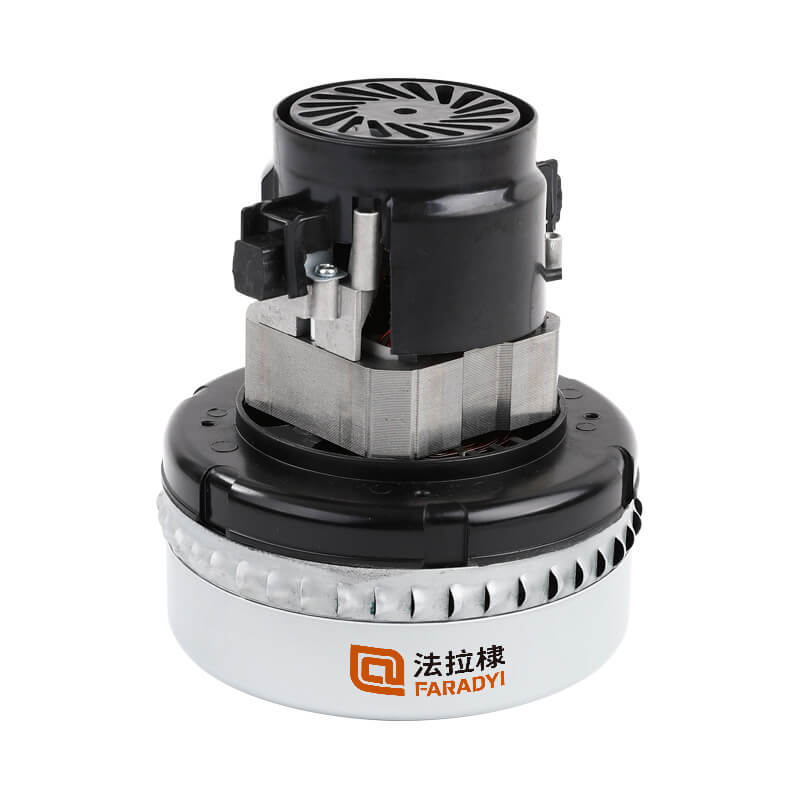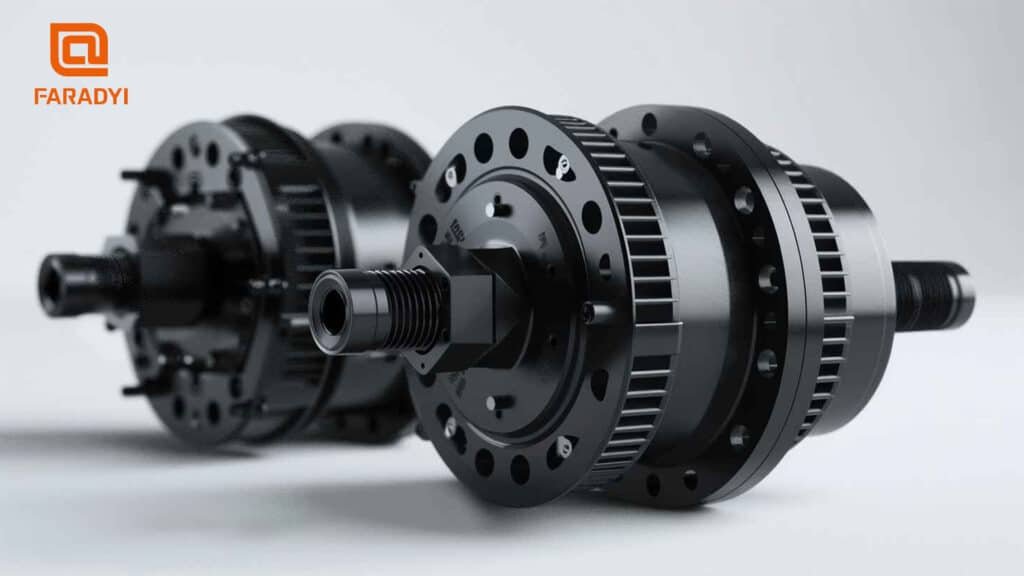DC-Servomotor-Encoder sind Rotationssensoren, die Drehbewegungen in eine Reihe digitaler Impulssignale umwandeln. Diese Impulse spielen eine entscheidende Rolle bei der Steuerung der Winkelbewegung und können in Verbindung mit Zahnstangen oder Gewinden auch zur Messung linearer Bewegungen genutzt werden.
DC-Servomotor-Encoder lassen sich in zwei Hauptkategorien einteilen: Absolut-Encoder und Inkremental-Encoder. Absolut-Encoder wandeln Winkel- oder Linearverschiebungen in elektrische Signale um. Erstere werden als „Codescheibe“ und letztere als „Codestreifen“ bezeichnet. Je nach Lesemethode werden Encoder in Kontakt- und berührungslose Typen eingeteilt, während sie je nach Funktionsprinzip in Inkremental- und Absolut-Typen unterteilt werden.
- Inkrementelle Drehgeber:
-
- Inkrementalgeber erzeugen während der Rotation Impulse und ihre Position wird durch Zählen dieser Impulse bestimmt. Wenn der Encoder stillsteht oder einen Stromausfall erfährt, verlässt er sich auf den internen Speicher des Zählgeräts, um seine Position beizubehalten. Diese Methode bringt jedoch Herausforderungen mit sich. Das Ausschalten des Encoders kann dazu führen, dass er seine Position verliert, was zu Ungenauigkeiten bei nachfolgenden Vorgängen führt. Inkrementalgeber wandeln die Verschiebung in periodische elektrische Signale um und wandeln diese Signale dann in Zählimpulse um, die die Größe der Verschiebung darstellen. Es ist wichtig zu beachten, dass bei Inkrementalgebern Probleme mit Stromunterbrechungen auftreten können, was möglicherweise zu einem Verlust von Impulsen führt. Um dies zu beheben, werden in industriellen Steuerungssystemen häufig Methoden wie das Finden eines Referenzpunkts vor dem Betrieb eingesetzt.
- Absolutwertgeber:
-
- Absolute Encoder, insbesondere optische Drehgeber, bieten einzigartige Vorteile. Jede Position auf der Codescheibe des Encoders entspricht einem einzigartigen digitalen Code, wodurch absolute Einzigartigkeit und Störfestigkeit gewährleistet werden. Absolute Encoder sind nicht auf Strom oder externen Speicher angewiesen, um ihre Position beizubehalten. Die Codescheibe enthält mehrere eingravierte Linien, die im Binärcode (Gray-Code) angeordnet sind, wodurch für jede Position ein einzigartiger Binärcode gewährleistet wird. Absolute Encoder ermöglichen präzise Messungen von Winkeln, Längen und Positionskontrolle in verschiedenen Industriesystemen. Sie machen das Suchen eines Referenzpunkts beim Einschalten überflüssig und gewährleisten genaue Positionsmessungen ab dem Moment, in dem Strom angelegt wird.
- Single-Turn- und Multi-Turn-Absolut-Encoder:
-
- Singleturn-Absolutwertgeber messen Drehungen innerhalb von 360 Grad und eignen sich für Anwendungen, bei denen eine volle Drehung ausreicht. Multiturn-Absolutwertgeber hingegen, die zahnradgetriebene Mechanismen verwenden, erweitern ihren Messbereich über 360 Grad hinaus, was die Installation vereinfacht und die Notwendigkeit einer Nullpunktkalibrierung reduziert. Die hohe Präzision, mehrere Ausgangsbits und die Widerstandsfähigkeit gegen Störungen machen Absolutwertgeber zur idealen Wahl für Anwendungen, bei denen Zuverlässigkeit und Genauigkeit von größter Bedeutung sind.
Zusammenfassend lässt sich sagen, dass die Wahl zwischen absoluten und inkrementellen Encodern in DC-Servomotoranwendungen von den spezifischen Anforderungen des Systems abhängt. Inkrementelle Encoder bieten Einfachheit, während absolute Encoder beispiellose Genauigkeit, Zuverlässigkeit und Widerstandsfähigkeit gegenüber externen Faktoren bieten. Das Verständnis dieser Unterschiede ist entscheidend für die Optimierung der Leistung von DC-Servomotoren in verschiedenen industriellen Umgebungen.
Dongguan Faradyi Technologie Co., Ltd. ist auf die Entwicklung und Produktion von DC-Servomotoren, DC-Servoantrieben und Motion-Control-Produkten spezialisiert. Unser Team bietet professionellen technischen Support und maßgeschneiderte Lösungsentwicklung für eine breite Palette von Anwendungen.
